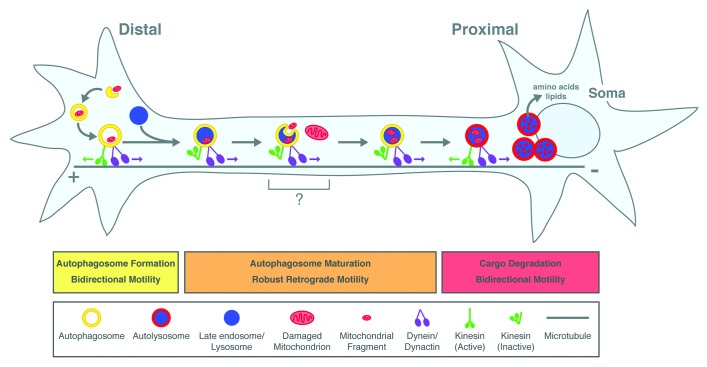Figure 1. Model for autophagosome formation and maturation along the axon of primary neurons. Autophagosomes are generated at the neurite tip in a constitutive process. Soluble and organelle cargoes become enveloped within newly forming autophagosomes. These autophagosomes initially move bidirectionally (green and purple arrows denote motor activity), but then switch to robust retrograde motility driven by dynein. This transition to retrograde motility is accompanied by fusion with late endosomes/lysosomes (gray arrows denote transitions between compartment maturation). En route to the cell soma, autophagosomes may collect additional cargoes along the axon. As they move distally to proximally, autophagosomes mature and become increasingly acidified as denoted by the change in color from yellow to red. This maturation into autolysosomes, a compartment that may more effectively degrade cargo, is accompanied by a switch back to the bidirectional motility characteristic of lysosomes. Delivery of autolysosomes to the cell soma ensures that digested contents are recycled to primary sites of protein and lipid synthesis.

An official website of the United States government
Here's how you know
Official websites use .gov
A
.gov website belongs to an official
government organization in the United States.
Secure .gov websites use HTTPS
A lock (
) or https:// means you've safely
connected to the .gov website. Share sensitive
information only on official, secure websites.
